We welcomed the opportunity to spend a few days in a country where they spoke English (although barely understandable), drove on the left and played cricket. Much to Sam's delight, the Caribbean Premier League was in full swing and being shown on about 20 screens with ear-deafening sound at the local bar. We were lucky to find ourselves staying with a good bunch of travellers at the excellent Rima Guest House, and enjoyed a few nights on the Bank's beer and 15-year-old El Dorado rum whilst practising our Caribbean accents...
The British took control of Guyana in 1796
. After the abolition of slavery in 1834, Africans unsurprisingly refused to work on plantations for wages and many established their own villages in the bush. Plantations closed or consolidated because of the labour shortage, but the sugar industry was resurrected with the help of an imported work force from Portugal, India and China, drastically transforming the nation's demographic. The country became an independent member of the British Commonwealth in 1966. Today, Guyana's economy relies on exporting bauxite, gold, sugar, rice, timber and shrimp.
Georgetown sits on the east bank of the Demerara (sugar) River, where the river empties into the Atlantic Ocean. A Dutch canal system drains the city, which is actually 7ft below sea level. The dilapidated architecture and unkempt parks offered a laid-back feel amid real life chaos. It was probably the most gritty city we had visited in South America - the 'Leave Arms Outside' signs at the corner shop didn't help to reassure us
.
The most impressive building in town was the Anglican, Gothic-style cathedral, said to be the world's tallest wooden building?! Another prominent landmark was the cast-iron Stabroek Market with its clock tower dating back to the late 1700s.
Unfortunately, we just missed the CPL games being hosted in Guyana. However, Sophie was still very excited to attend her first ever game of cricket - Day 2 of Trinidad & Tobago v Barbados in the u19 Caribbean regional tournament. What a lucky girl! She even had the choice of 15,000 seats...
However, a visit to Georgetown was not complete without a trip to the Bourda - TMS always made it sound like an amazing place. We (Sam) were pleased to find the famed old ground standing in what can only be described as 'glorious dilapidation'. It was a pleasure to meet former county pro and veteran of 3 (unspectacular) ODIs for England, Monte Lynch, sat at the pavilion bar overseeing a coaching session
. He was delighted to pull out his best cockney accent as he reminisced about games at Chelmsford, Southend and Ilford.
Culinary highlights included 'bake and saltfish' - a fine breakfast of fried bread and salted cod, and a few more welcomed rotis.
Unfortunately, there is no legal border crossing from Guyana to Venezuela, meaning we had to go via Brazil. However, first we needed to get to Lethem in the southwest of Guyana. We had a choice of a 27hr 4x4 journey or a 1hr flight. After our previous experience of 4x4 travel in this wet and muddy part of the world, we opted for the latter which involved a very small plane and some spectacular views across the Guyanese jungle.
We spent a night in Lethem, a nondescript border town, before taking several shared taxis to Santa Elena, Venezuela, via Boa Vista, Brazil, 4hrs.
Hurrah for the British Commonwealth!
Thursday, July 24, 2014
 Georgetown, Guyana
Georgetown, Guyana
Other Entries
-
62The Pantanal
May 2758 days prior Campo Grande, Brazilphoto_camera21videocam 0comment 0
Campo Grande, Brazilphoto_camera21videocam 0comment 0 -
63The monster city...
Jun 0252 days prior Sao Paulo, Brazilphoto_camera12videocam 0comment 0
Sao Paulo, Brazilphoto_camera12videocam 0comment 0 -
64A cobblestoned colonial town...
Jun 0450 days prior Paraty, Brazilphoto_camera7videocam 0comment 0
Paraty, Brazilphoto_camera7videocam 0comment 0 -
65Gorgeous beaches meet lush forests...
Jun 0648 days prior Ilha Grande, Brazilphoto_camera7videocam 0comment 0
Ilha Grande, Brazilphoto_camera7videocam 0comment 0 -
66'Cidade Maravilhosa'
Jun 0846 days prior Rio de Janeiro, Brazilphoto_camera32videocam 0comment 0
Rio de Janeiro, Brazilphoto_camera32videocam 0comment 0 -
67Baroque churches galore...
Jun 1539 days prior Ouro Preto, Brazilphoto_camera5videocam 0comment 0
Ouro Preto, Brazilphoto_camera5videocam 0comment 0 -
68Brazil's 'space age' capital...
Jun 1737 days prior Brasilia, Brazilphoto_camera13videocam 0comment 0
Brasilia, Brazilphoto_camera13videocam 0comment 0 -
69Brazil's African soul...
Jun 2232 days prior Salvador, Brazilphoto_camera16videocam 0comment 0
Salvador, Brazilphoto_camera16videocam 0comment 0 -
70Hot and nervy times in the FIFA FanFest...
Jun 2727 days prior Olinda, Brazilphoto_camera10videocam 0comment 0
Olinda, Brazilphoto_camera10videocam 0comment 0 -
71'Sun City'
Jun 2925 days prior Natal, Brazilphoto_camera3videocam 0comment 0
Natal, Brazilphoto_camera3videocam 0comment 0 -
72Sao Joao continues...
Jul 0123 days prior Sao Luis, Brazilphoto_camera6videocam 0comment 0
Sao Luis, Brazilphoto_camera6videocam 0comment 0 -
73The Amazon Rainforest
Jul 0420 days prior Manaus, Brazilphoto_camera30videocam 0comment 0
Manaus, Brazilphoto_camera30videocam 0comment 0 -
74Tchau e obrigado Brasil!
Jul 0915 days prior Belem, Brazilphoto_camera10videocam 0comment 0
Belem, Brazilphoto_camera10videocam 0comment 0 -
75Petanque, croissants and 1664...
Jul 1212 days prior Cayenne, French Guianaphoto_camera6videocam 0comment 0
Cayenne, French Guianaphoto_camera6videocam 0comment 0 -
76Rockets and Convicts...
Jul 159 days prior Kourou, French Guianaphoto_camera12videocam 0comment 0
Kourou, French Guianaphoto_camera12videocam 0comment 0 -
77A town built by convicts...
Jul 186 days prior St Laurent Du Maroni, French Guianaphoto_camera5videocam 0comment 0
St Laurent Du Maroni, French Guianaphoto_camera5videocam 0comment 0 -
78Amsterdam meets the Wild West...
Jul 195 days prior Paramaribo, Surinamephoto_camera11videocam 0comment 0
Paramaribo, Surinamephoto_camera11videocam 0comment 0 -
79Hurrah for the British Commonwealth!
Jul 24 Georgetown, Guyanaphoto_camera13videocam 0comment 0
Georgetown, Guyanaphoto_camera13videocam 0comment 0 -
80La Gran Sabana
Jul 295 days later Santa Elena de Uairen, Venezuelaphoto_camera7videocam 0comment 0
Santa Elena de Uairen, Venezuelaphoto_camera7videocam 0comment 0 -
81The centre of the struggle for independence...
Aug 029 days later Ciudad Bolivar, Venezuelaphoto_camera8videocam 0comment 0
Ciudad Bolivar, Venezuelaphoto_camera8videocam 0comment 0 -
82The world's highest waterfall...
Aug 0310 days later Canaima National Park, Venezuelaphoto_camera14videocam 0comment 0
Canaima National Park, Venezuelaphoto_camera14videocam 0comment 0 -
83The Lost World
Aug 0714 days later Mount Roraima, Venezuelaphoto_camera17videocam 0comment 1
Mount Roraima, Venezuelaphoto_camera17videocam 0comment 1 -
84Colombia's Amazon
Aug 1421 days later Leticia, Colombiaphoto_camera9videocam 0comment 0
Leticia, Colombiaphoto_camera9videocam 0comment 0 -
85A beautiful city on the Caribbean coast...
Aug 1724 days later Cartagena, Colombiaphoto_camera12videocam 0comment 0
Cartagena, Colombiaphoto_camera12videocam 0comment 0 -
86Simon Bolivar RIP
Aug 2128 days later Santa Marta, Colombiaphoto_camera10videocam 0comment 0
Santa Marta, Colombiaphoto_camera10videocam 0comment 0 -
87The Lost City
Aug 2330 days later Ciudad Perdida, Colombiaphoto_camera12videocam 0comment 0
Ciudad Perdida, Colombiaphoto_camera12videocam 0comment 0 -
88(Probably) the world's most progressive city...
Aug 2936 days later Medellin, Colombiaphoto_camera12videocam 0comment 0
Medellin, Colombiaphoto_camera12videocam 0comment 0 -
89Coffee and hummingbirds...
Sep 0240 days later Salento, Colombiaphoto_camera14videocam 0comment 0
Salento, Colombiaphoto_camera14videocam 0comment 0 -
90The heartbeat of Colombia...
Sep 0543 days later Bogota, Colombiaphoto_camera20videocam 0comment 0
Bogota, Colombiaphoto_camera20videocam 0comment 0 -
91A quiet colonial town...
Sep 0947 days later Popayan, Colombiaphoto_camera9videocam 0comment 0
Popayan, Colombiaphoto_camera9videocam 0comment 0 -
92Shopping!
Sep 1149 days later Otavalo, Ecuadorphoto_camera8videocam 0comment 0
Otavalo, Ecuadorphoto_camera8videocam 0comment 0 -
93Chocolate, birds, butterflies and frogs...
Sep 1452 days later Mindo, Ecuadorphoto_camera11videocam 0comment 0
Mindo, Ecuadorphoto_camera11videocam 0comment 0 -
94Evolution at its best...
Sep 1755 days later Galapagos Islands, Ecuadorphoto_camera45videocam 0comment 0
Galapagos Islands, Ecuadorphoto_camera45videocam 0comment 0

 Georgetown, Guyana
Georgetown, Guyana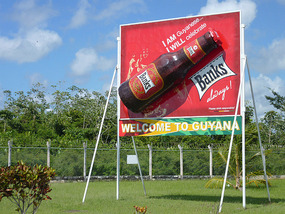
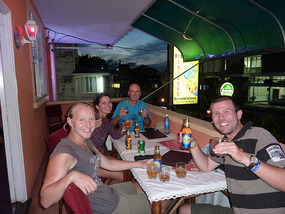
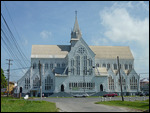







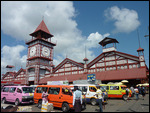

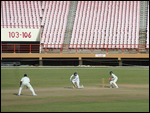

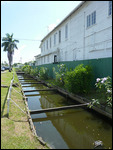
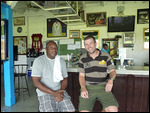
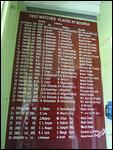
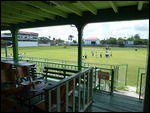
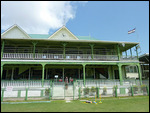
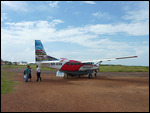
2025-05-22